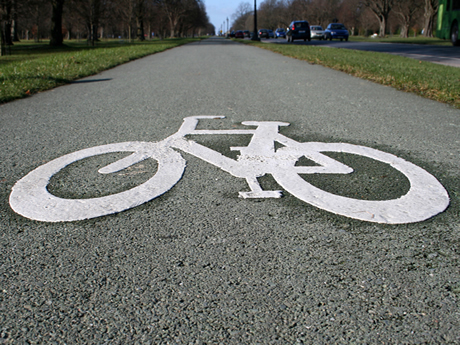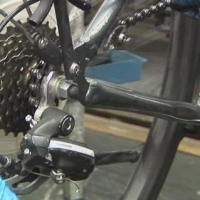Shank or severe pull with wedges after 30-45 min (disregard the last two replies)
Question
QUESTION: I know the common fault between a shank and a severe pull. and it is because the left hip doesn't clear.
After about 45 minutes of practice - I'll be going along nicely, hitting chip,pitch and full shots with the wedges. It will set in without warning. When I try to take a full shot, I get three outcomes: if I make good contact, I get a pull of about 10 yards or so. The other two are a duck hook that does not get airborne or a shank that does not get airborne. It seems like I am limited to a half swing (which I hit perfectly straight) for about 20 minutes (one day I was practicing with a 60 degree wedge and was able to hit perfectly straight 1/2 and 1/4 pitches for about 45 minutes but could not do a full swing). Then a total shutdown occurs where I can't even do a 1/4 swing pitch. I have to stop practicing completely. If I go back a few hours later, I'll be OK for about 10 minutes and then it pops up again. If I don't swing a club for about 2-3 days, I can go hit balls as if nothing ever happened (I limit my time to about 15 minutes).
I do all the standard anti-shank drills like using a shag stick about 2" from the ball.
I am about a 15 handicap. I also found out that hitting a bucket of balls even within about 3 hours of playing a round of golf is disastrous to my score (this happened back in Ocober, where I had a total meltdown of my short game from the 7 iron down). What I do now is swing a 9 iron for about maybe 10 minutes before playing a round of golf.
There are a couple things... until about August of last year, I basically struggled with my driver, woods and hybrids. I used to use "player irons" (Golfsmith P2). MY short game had been the strong point of my golf game. My dad gave me a tip about standing a bit more erect and I have been hitting the woods and hybrids very well (I got got rid of a pull and pretty much hit them perfectly straight). After October, I had to change my setup - I have hybrids all the way down to the 8 iron (a 38 degree Snake Eyes Quick Strike). I also got a game improvement 9 iron that is 1/2 inch longer (at 36") than my Golfsmith P2 and lengthened all my wedges to 35.5"
The last time I played golf was 3 weeks ago and shot 74 on a par 58 course.
I need to get to the root of what limits my practice to 45 minutes and causes this swing anomaly (I know it has to be muscle fatigue). I appear to have difficulty clearing the left hip and/or shifting weight off the right foot.
The ironic thing is it occurs with some wedges (my Macgregor VFoil was a go to club until today and it occurs with my Vokey wedge, my Alien 60 and 64, and my Wilson Harmonized) and not with others (I have a set of Dunlop CB wedges; I almost never have the problem with the 56 and 60 degree clubs and have it once in a while with the 52 and, even if it occurs with the former two wedges, I can recover).
ANSWER: Hello Lou. At the end of the following comments I've inserted my thoughts on the shank. Following those, I outline the steps to take to assume the set up profile of the vast majority of tour players. (You don't see them hitting shanks.) After you read them, some of the events you describe here may make more sense to you. For instance, you may no longer wonder why, if you don't shank the ball, you sometimes pull it.
Also, you are correct in that both physical and mental fatigue can be factors to consider. The drills you mention doing are treating the symptoms rather than the cause. So while you're doing the drills, the physics of the swing are in contrast with how you are set up to swing.
1. Standing Too Close to the Ball. The centrifugal force generated by the swing (揷entrifugal force is an outward force associated with rotation? causes your arms to tend to travel on the path of least resistance. In other words, your arms want to move on the path determined by where they hang loosely from the shoulders. So, if you stand so that your arms are closer to the body than they would be if they were just hanging, you would have to pull your arms in towards you in the forward swing to hit the ball solidly. With the centrifugal force of the swing pushing your arms away from you, the club will sometimes change path enough so that the hosel makes contact with the ball.
2. Sitting Back on the Heels. The ideal swing is one in which the weight shifts slightly away from the target and then forward to eventually end up with most of it resting on the front foot. For that to happen, one must push off the back foot and for that to happen in the proper sequence, it must push off from the ball of the rear foot. When one is sitting on their heels, the weight must move to the balls of the feet before the weight can shift forward. So, at the point in the forward swing when the weight should be shifting towards the target, it is shifting from the heels towards the ball. This shift towards the ball also moves the swing path closer to the ball making it likely the hosel will strike the ball.
3. Improper Aim. If the golfer is set up to the right (for right-handed players) of the target, instinct and reflex will cause the club to be swung to the left so as to move toward the target. When the club is taken away either straight away from the ball or to the inside, it must loop up and over the top to get back on the target path. That motion will move the club抯 path away from the golfer and the hosel into the ball.
The Professional Setup
1. Bend from the hips so that the shoulders are over the toes.
2. Flexes the knees only to the point of relaxing them.
3. Play the ball far enough away to allow the arms to hang
fairly straight down from the shoulders.
4. Position the weight on the balls of the feet.
Lou, chew on this for a while, give it a try and please let me know how you fair.
Fairways and Greens,
John
www.golfnutts.com
---------- FOLLOW-UP ----------
QUESTION: I chewed on #3 (improper aim) for awhile. The thing I was thinking about is too vertical of a backswing. I tried some practice swings with a little bit more rounded backswing (more of a shoulder turn) and found it easier to clear the left hip. So I tried it this am at the park for about 15 minutes with both the 50 and 52 deg wedges with success (and was pretty consistent).
I went to the driving range today at lunch and started out just fine for about 15 minutes and the fault came on without warning when I was doing a choked down pitch shot with my 52. It became unpredictable as to what would happen and I had to quit doing wedge shots (because it got so bad that I couldn't even take a partial swing). I also had a couple other golfers take a look (the only problem is one guy was telling me to play the gap wedge off my back foot and I know better since I have always played my short irons center or slightly ahead of center; when I am swinging well, I can play the ball all the way forward or even off the back foot, depending on what I want to do). One rather elderly gentleman noticed I was either swaying or going too far forward. There is a common thing both of them noticed, and it was that my right hand seemed to take over (the earlier individual noticed I had an overly strong grip). The other thing is that my oblique muscles felt a bit stiff and it seemed like I had difficulty clearing the left hip and shifting the weight off the right foot. The funny thing is I borrowed the elderly gentleman's driver and proceeded to nail one pretty close to 300 yards. I hit several drives that went pretty far and the common thread was that I had a slight bit of a slice.
I walked away from the driving range and went into the practice bunker and did some long shots with the 50 deg wedge. I initially started out hitting about 5 yards left and then straightened out (the 52 didn't work). No problem with shanking. I went over to the pitching area and started out with 1/4 shots with the 50(againg they started out going about 5 feet left of target and then eventually straightened out) and was able to hit half pitch shots. I didn't attempt full pitch shots.
I'm beginning to think the problem may have something to do with a muscle or two getting stiff, along with certain clubs working better than others.
Answer
Lou, thanks for writing of your progress. Some of what you say makes me think you should work on the professional set up (profile). Your swing being too vertical, people noticing you sway or going too far forward and your right hand taking over, all are symptoms of poor balance. Poor balance prevents a proper weight shift and if the weight doesn't shift to the rear, the left knee, left shoulder, left hip are all too far ahead. So basically you only have two things left with which to hit the ball, your arms and hands and because your arms cannot swing fast enough to catch up with all the other parts, it leaves just your hands. Because your right hand is in the dominate position, you feel it getting over active. The fact you seem to hit the longer clubs better than the short ones makes me think you spine angle is too vertical as well. Take some time and develop some consistency in your spine angle throughout your clubs. I like to tell my people to get in front of a mirror so they can put themselves into the professional set up position. Then look down at their feet to see how the hands are positioned in relation. When I'm in a balanced, professional set up and look down at my left foot, my hands block most of it from view. This may not hold true for you due to differences in physique but you should be able to find some relationships that stand out. You said your muscles get stiff, well, that's a good reason to learn what you look like when in the proper set up so that your position isn't unduly influenced by how you feel.
Keep me posted,
John
Shaft
Golf ball inventory


